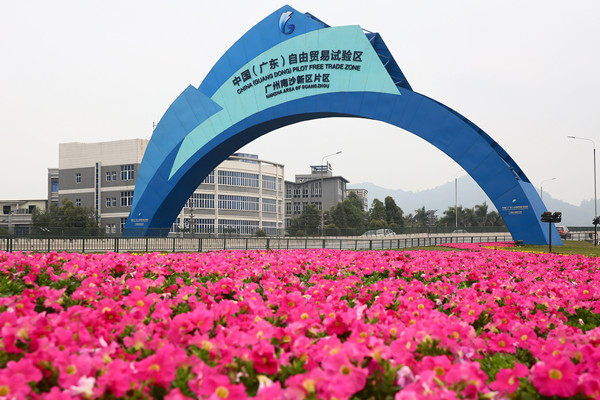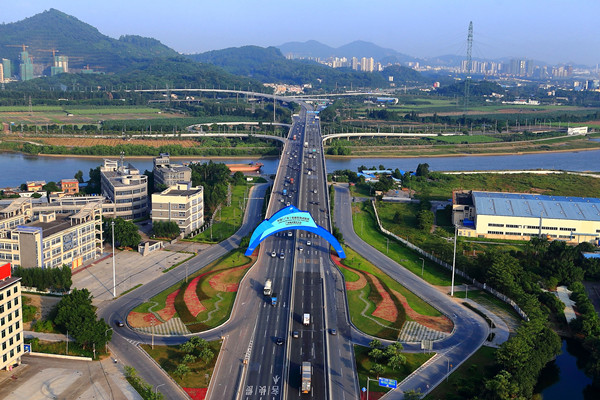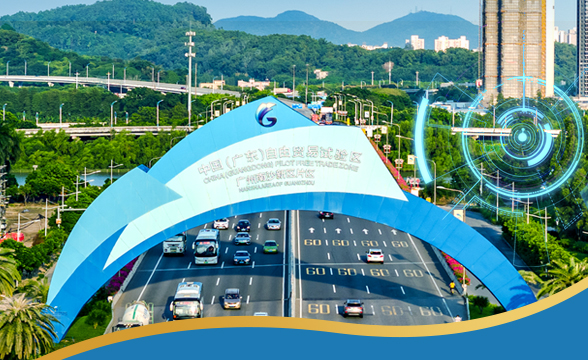Overview
Covering a total area of 60 square kilometers (including the 7.06-square-kilometer Nansha Bonded Port Area), the China (Guangdong) Pilot Free Trade Zone Nansha Area of Guangzhou (Nansha FTZ) is divided into seven functional zones.
1. The Port Cluster covers 15 square kilometers. Block 1 of this area refers to the Longxue Island Processing Area of 13 square kilometers (including the 5.7-square-kilometer Nansha Bonded Port Area and its logistics area). Block 2 of the cluster is the Shazai Island Processing Area of two square kilometers.
2. The Pearl Bay Cluster covers nine square kilometers, excluding the Jiaomen and Shanghengli rivers.
3. The Nansha Hub Cluster has an area of 10 square kilometers.
4. The Qingsheng Hub Cluster covers eight square kilometers.
5. The Nansha Bay Cluster covers five square kilometers, excluding the Dajiao Mountain.
6. The Jiaomen River Central Cluster has an area of three square kilometers.
7. The Wanqingsha Bonded Port Manufacturing Cluster covers 10 square kilometers (including the 1.36 square kilometer Nansha Bonded Port Processing Area).
Nansha FTZ is the city's only gateway to the sea and the geographical center of the Great Pearl River Delta (PRD) region. It is also an important opening for clusters of cities at both banks of the Pearl River and the country's south gate to the rest of the world. More than 10 cities with strong economic capacity such as Shenzhen, Foshan and Dongguan and Hong Kong and Macao, are scattered within this 100-kilometer-wide region. The geographical proximity to these two Special Administrative Regions and the support of Guangzhou and the Great PRD region with a population of 60 million contribute to the importance of Nansha FTZ. It enjoys geographical advantages and strategic value as it links China with the rest of the world by sea. The FTZ helps Hong Kong and Macao business better explore mainland markets and facilitates mainland businesses to expand internationally. Moreover, due to its broad hinterland, the area boasts huge development potential.
Development targets
The FTZ is committed to cultivating a legally sophisticated, market-oriented and internationalized business environment through three to five years of experimental reforms, establishing a new open economic system, realizing deep economic integration between Guangdong, Hong Kong and Macao, and forming a new competitive edge in international economic cooperation. It will strive to be a pilot free trade zone with legal environment norms in line with high international standards and investment and trade facilitation. The zone can be an exceptional driving force in the area offering safe and highly efficient regulation.
Strategic positioning
The FTZ is committed to establishing an internationalized business environment adapted to international rules and prioritizing liberalization of service trade with Hong Kong and Macao. It will become an international shipping logistics center with high integration of international trade functions and strong financial innovation services, and form a demonstration base for scientific and technological cooperation with countries and regions along the 21st-century Maritime Silk Road. Overall it will contribute to building a new and open economic pattern.
Due to its geographical advantages, the zone will focus on the development of shipping logistics, international finance, international trade, science and technological innovation, marine economy and high-end manufacturing industries. It will emerge as a modern industrial base and a world-class integrated service hub, as well as an all-round Guangdong-Hong Kong cooperation demonstration area.

China (Guangdong) Pilot Free Trade Zone Nansha Area of Guangzhou (Nansha FTZ) [Photo provided to chinadaily.com.cn]

Panorama of Nansha FTZ [Photo provided to chinadaily.com.cn]
All rights reserved. Presented by China Daily










